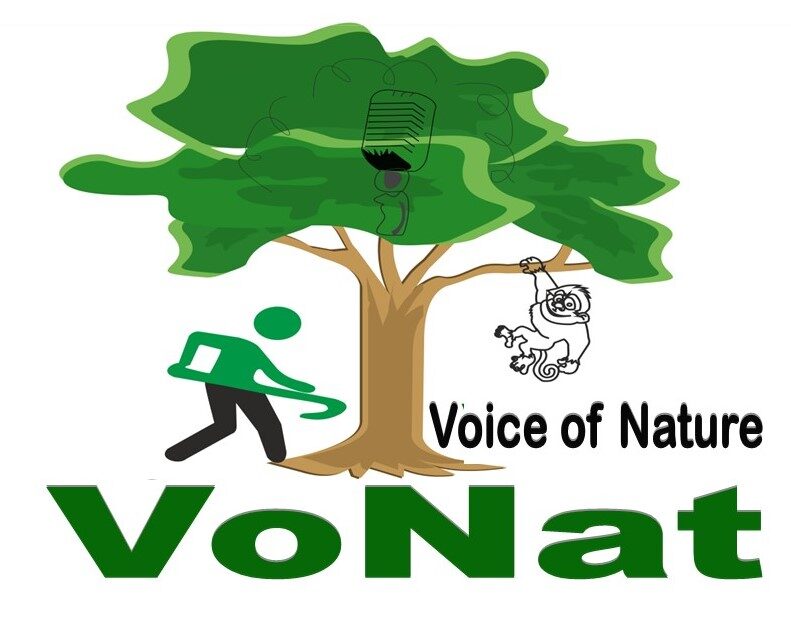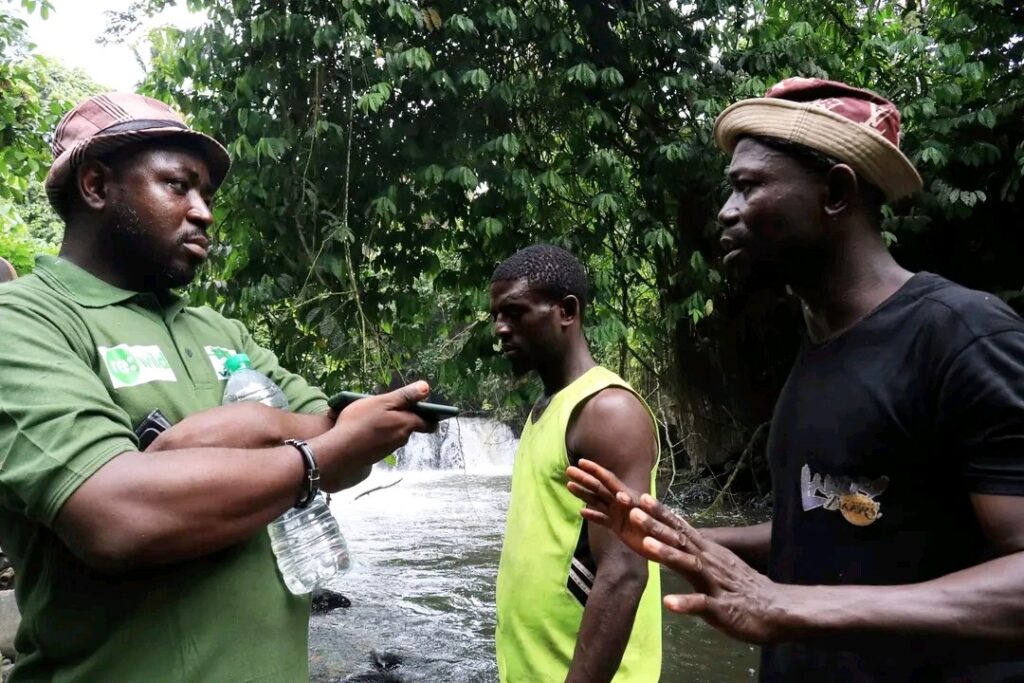Voice of Nature (VoNat) is currently been supported by Re:Wild to engage local communities in mapping Goliath frog conservation threats and co-designing local solutions for the conservation of emblematic species in the Mount Nlonako Area, Littoral Region of Cameroon. Goliath frog (Conraua goliath) is the world’s largest frog, classified as endangered on the IUCN Red List and found only in Cameroon and Equatorial Guinea. The frog plays an invaluable role in mitigating the spread of diseases and marinating the ecosystem, but is heavily hunted for pet trade and food, besides other threats.
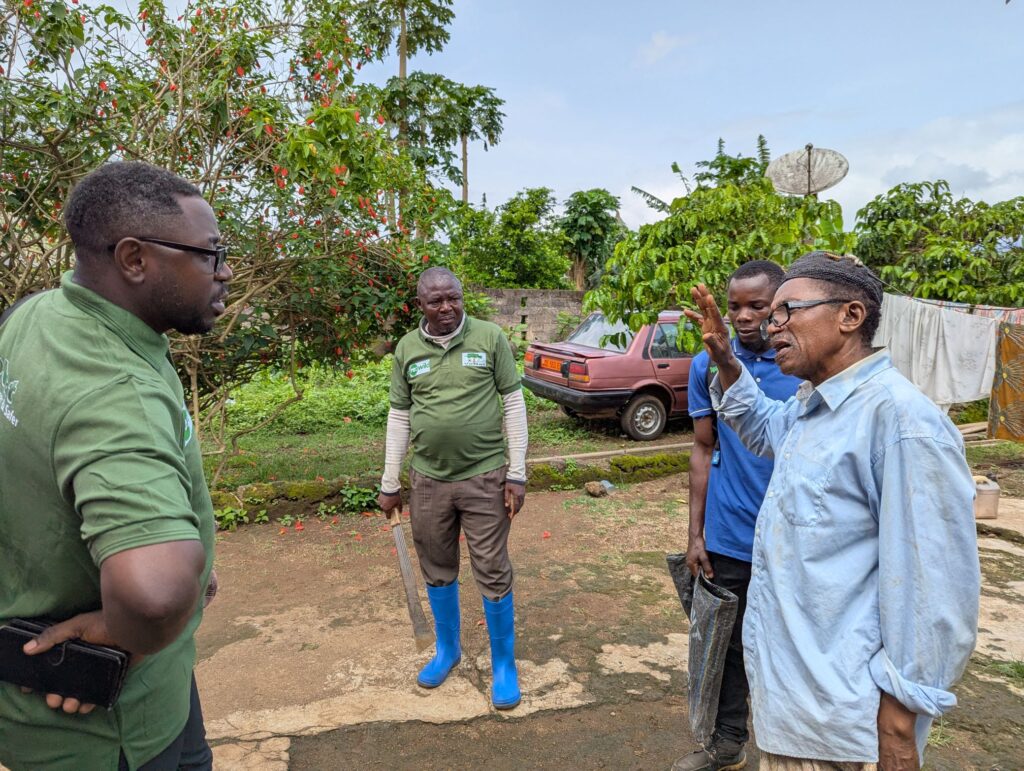
With the consent of local and traditional authorities, the VoNat research team kick-started the mapping of goliath frog sites in the Manjo Subdivision in April 2025. The research team was led by local actors (leaders, hunters, and farmers) to key Goliath frog sites in the Manengoteng, Ngol, and Lala Mission communities, where they identified and assessed the ecology and impact of human activities on the frog’s sites and population, using participatory ArcGIS mapping and storytelling approaches.
“By engaging local community members in the mapping of goliath frog sites and the ecological threats, fresh interest is being ignited in them for the Goliath frog. Many of them are also gaining skills that can be used in mapping other natural resources in their communities for conservation,” Ndimuh B. Shancho, VoNat’s Executive Director said.
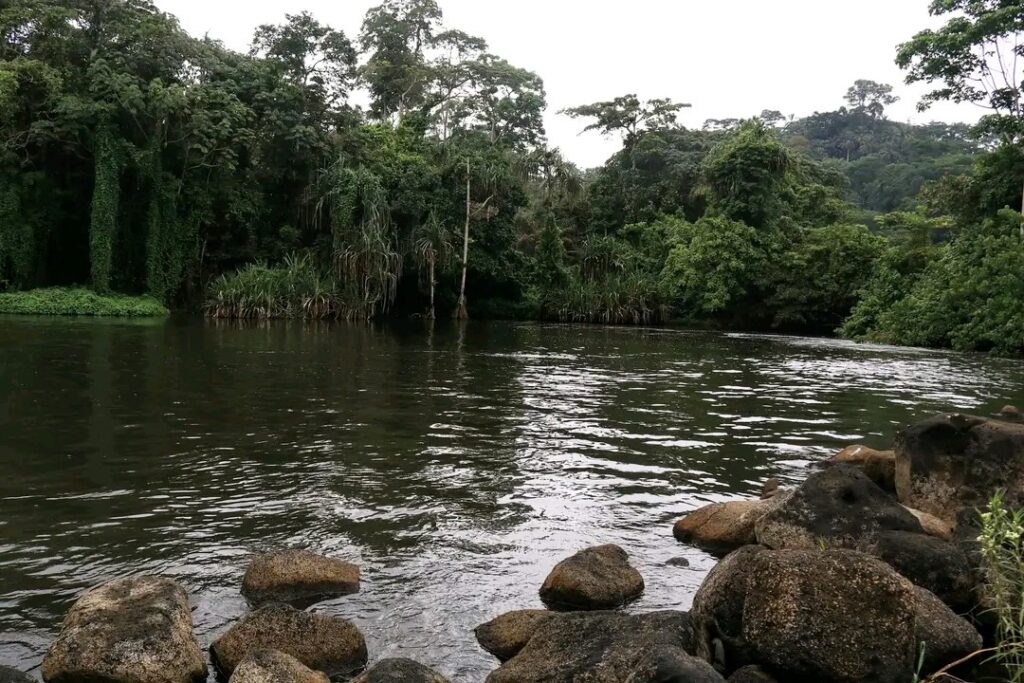
The VoNat research team has also been engaging traditional leaders and community members in Manengoteng, Lala mission and Ngol communities of Manjo sub-division in meaningful storytelling sessions. Through this, the team is uncovering deep-rooted cultural connections between local people and the goliath frog; how these giant frogs are intersected with their environment, traditions and local knowledge systems.
Though so much has been discovered already following the mapping and storytelling sessions in just three communities in the Manjo Subdivision, VoNat is planning a similar exercise in four other communities in the Manjo Division. Meanwhile, the Divisional Officer of Nlonako Sub-division has already given authorization for a similar research to be conducted in communities in that area.
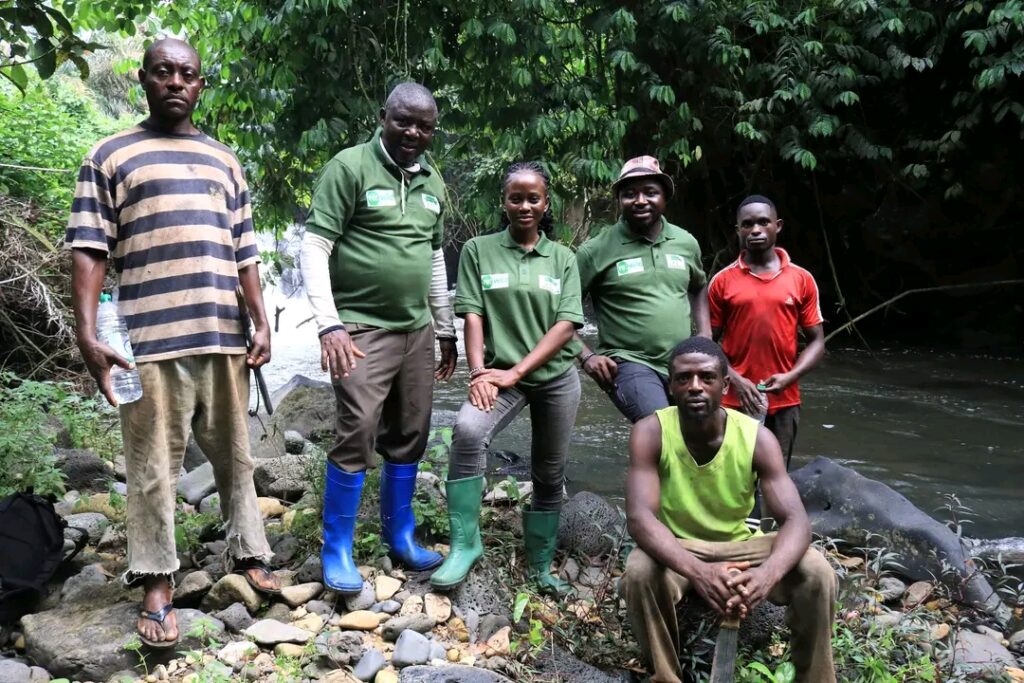
The research work that will run till November 2025, is expected to produce data that will inform goliath frog conservation efforts, guide different conservation interventions necessary to
reduce goliath frog depletion, facilitate further research, and serve as a valuable tool to
policy makers and conservators.
By Jabi Katy
